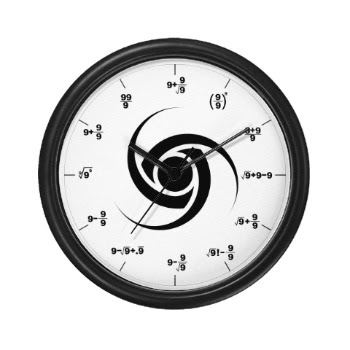So you think iPhone is the greatest thing ever.
Think again.
A long time ago-in a galaxy far, far, away, people thought they had the greatest video game system ever. The year was 1977. While that may sound like the age of the dinosaur for those of you who can't remember life without texting or cell phones, it's not really that long ago. As a matter of fact, statistically speaking, you'll probably live longer than 2 billion seconds or over twice that amount of time.
Anyways, in 1977, the first successful home video game systems came into play. (I know some of you can't imagine life without video games, but people did survive.) The first widely available video game system was the Atari (later to be called the Atari 2600). The Atari was out long before any of the Playstations, Nintendos, or XBoxes. If you don't know what I'm talking about, look up "Atari" sometime when you're not texting inequalities on your phone. (Example: Dude, 1<3
Don't Stop Believing - it's my favorite song on my iPod- it is so da bomb).
You may ask, "Why would I care about 1977? That's like, last century." Well, stick with me young Jedi for you have a lot to learn. (-not only did the Atari come out in 1977, but
Star Wars did as well.)
Ok, so why was the Atari so revolutionary (even if it was 1977)? I'm glad you asked.
The Atari cartridge was revolutionary because it had 4K of memory. That's 4,000 bytes (actually 4,096, but we're going with 4,000). Remember from typing class that 1 character equals about one byte. For 1977 that was pretty amazing. For 2009, that's pretty lame because the basic iPhone has 4GB of memory.
So the PSSA style question is: "How many Atari cartridges would fit on an iPhone?"
A. A whole lot. (or ITL)
B. IDK. (otherwise known as ITL)
C. I'm not quite sure, but 1 <3 learning so let's figure it out.
D. Don't select this choice, it's just on here to be a distraction. (or ITL to read and eliminate this choice)
I hope you chose "C."
First of all some background information: (this would be on a formula sheet, padawan)
1K = 1000 bytes
1MB = 1000K
1GB = 1000MB
Now to use the force (i.e. math) to figure things out: (note the ..... are just placeholders because Mathman stinks at page formatting in html.)
1 cartridge..... C cartridges
--------------- = ------------
4 K............... 1000K
Solving for C (by using cross products and proportions) gives us:
1*1000=1000
1000/4=250 cartridges in 1000K (or 1MB)
Now,
250 cartridges..... N cartridges
------------------- = ---------------
1 MB ................ 1000 MB
Solving for N gives,
250*1000=250000
250000/1=250000 cartridges in 1000MB (or 1GB)
Since the iPhone we're comparing to is 4GB, that would hold 250,000*4 = 1,000,000 Atari cartridges.
Big deal, you say, the iPhone I want is still the greatest thing EVER.
For now.
Let me leave you with the next up and coming unit of measure. The terabyte (TB) is coming and it's 1000GB. It's going to make your iPhone go the way of the Atari.


